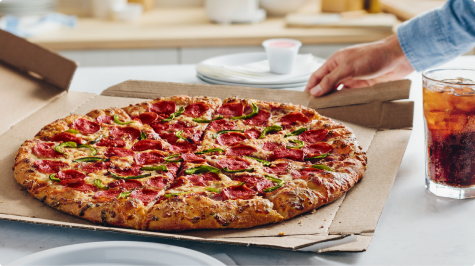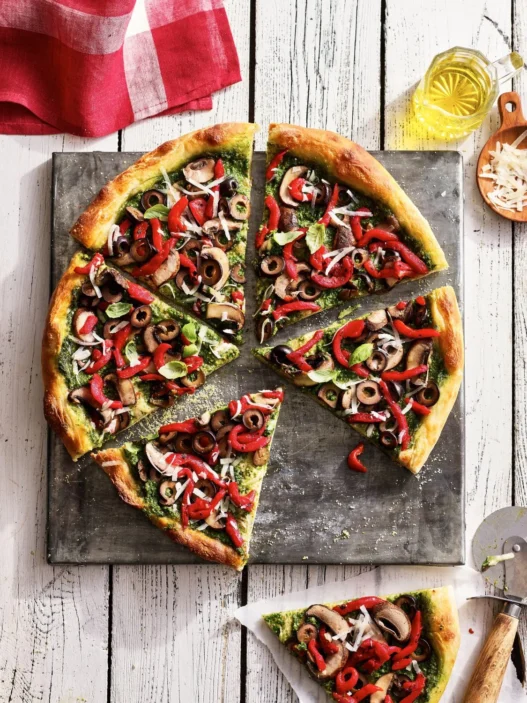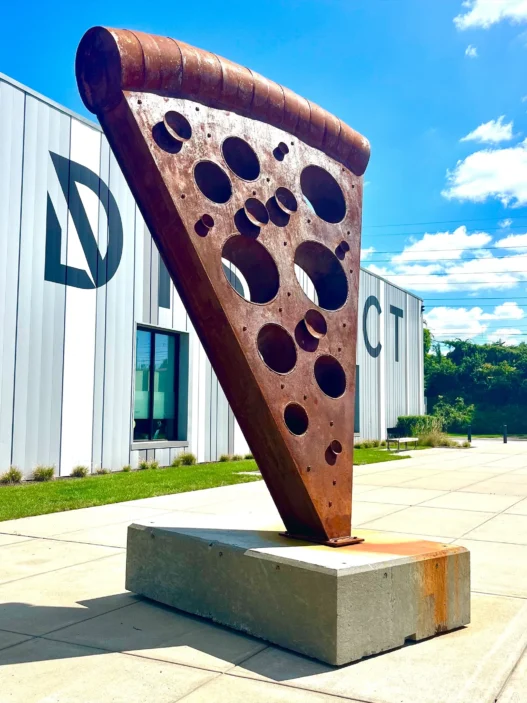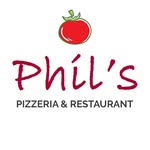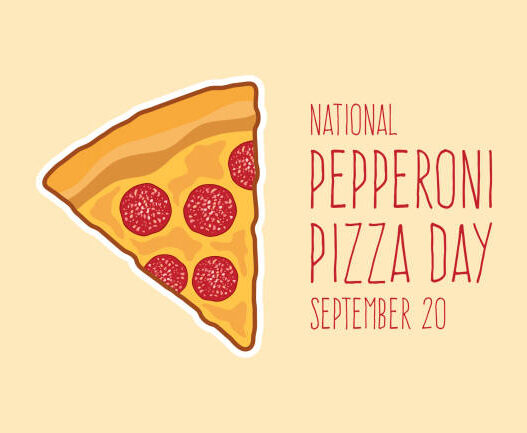New Haven, Connecticut — famed worldwide for its apizza (local pronunciation “ah-beetz”) style — just cemented its status as the Pizza Capital of the United States with a gargantuan event that broke the Guinness World Record for the largest pizza party. Held Friday, September 12, 2025, on the New Haven Green during the annual A-1 Toyota Apizza Feast / New Haven Grand Prix festival, the event drew 4,525 pizza lovers, each of whom ate at least two slices of pizza — officially surpassing the previous record of 3,357 set in Tulsa, Oklahoma in 2023.
How New Haven Pulled Off Such a Feat
Putting together a record of this scale is more than just buying pies — it’s logistics, community, and a deep love for crust. Here’s how New Haven did it:
- Event setup & timing: The largest pizza party portion ran from 3:30-7:00 p.m. on the Upper Green, part of the larger festival that includes a cycling Grand Prix, dozens of vendors, music, and more.
- Attendance & requirements: 4,525 people each consumed two full slices of pizza and one bottle of water in a fenced-in, steward-watched area. Participants had about 15 minutes to finish their slices and drinks after entering the designated party zone. Crucially, all had to remain until 7 p.m. for the official counting.
- Pizza supply & gear: Over 10,000 slices were baked and supplied by Big Green Truck Pizza, which brought five trucks, two trailers, and 21 staff to make it happen.
- Guinness adjudication: Thomas Bradford, an official Guinness World Records adjudicator, oversaw the event and certified New Haven as the new world record-holder.
New Haven’s Pizza Legacy: Why this Record Means More
To fully appreciate this milestone, you need some context.
- Birthplace of apizza: Frank Pepe Pizzeria Napoletana (founded in 1925) is often cited as the originator of New Haven-style pizza. Legendary pizzerias Sally’s Apizza and Modern Apizza followed in later years. Together they form New Haven’s “holy trinity” of apizza.
- Italian immigrant roots: The apizza tradition traces back to Italian immigration in the late 19th and early 20th centuries, when baking techniques from Southern Italy blended with local ingredients. That crust-char, thin base, coal ovens — all part of what gives New Haven apizza its signature identity.
- Community & pride: This wasn’t just about setting a record. It was about celebrating local pizza culture, neighborhood identity, shared memories over a coal-fired crust. Organizer Colin Caplan (Taste of New Haven) emphasized this pride. Big Green Pizza Truck’s team echoed that for them, supplying pies is more than business — it’s heritage.
Pro Tips for Home Pizza Makers Inspired by New Haven
Since New Haven just raised the bar, here are some lessons (with practical tips) for home pizza enthusiasts who want to bring some of that magic to their oven:
- Invest in the right tools
- A stones or steel baking surface (pizza stone or steel) helps mimic the heat retention like coal or wood ovens. Affiliate tip: grab a top-quality pizza stone or steel at this link: best home pizza oven tools & accessories.
- Perfect your dough recipe
- Use high-protein flour (12-14% protein) for chew and structure. Let dough ferment cold (in refrigerator) for 24-48 hours. That gives flavor complexity and better crust char. For great home pizza dough guidelines, check out our pizza dough recipe for step-by-step instructions.
- Maximize heat, minimize time
- New Haven apizza shades the crust by using very hot ovens; in home ovens, use the highest temperature you can safely, ideally with a pizza stone preheated. Use broil or top-oven booster where available.
- Flavor comes from char
- That slightly burnt edge isn’t a mistake — it’s character. A thin crust that blistered a bit, a little blackened spot on the rim, that’s part of authentic apizza style.
- Ingredient sourcing matters
- Use well-balanced tomato sauce (San Marzano or similar if budget allows), mozzarella that browns well, and minimal toppings (New Haven style often “plain” or with just tomato & seasonings). For artisanal pizza ingredients & specialty sources, see our suppliers section.
Implications for Pizza Shops & Suppliers
New Haven’s event doesn’t just matter to hummable headlines — it influences industry trends:
- Bulk ingredient demand: Supplying 10,000+ slices at once needs large volumetric buys of flour, cheese, sauce. Suppliers who can deliver high-quality ingredients at scale will benefit. Think refrigerated supply, local sourcing for freshness, sustainable procurement.
- Equipment scaling: Pizza trucks, mobile ovens, efficient pizza production lines — Big Green brought 5 trucks & 2 trailers. That suggests mobile/compact ovens, high throughput impact heavily in large-scale events.
- Operational logistics and POS: Tracking thousands of attendees, ensuring rules compliance (everyone eats 2 slices, etc.), coordinating water, staff, fencing — it’s a big operations challenge. POS systems, crowd-management tools, real-time tracking matter.
- Marketing & branding boost: New Haven now has a Guinness World Record. That kind of credential boosts tourism, pizzeria foot traffic, local pride. Any pizza shop nearby can ride the wave: limited-edition pizzas, events, “celebrate the record” promos.
FAQ: People Also Ask
Q: What qualifies as a Guinness World Record for the “largest pizza party”?
A: The event must follow strict rules: all participants must eat a minimum amount of pizza (in New Haven’s case, two slices), consume water, stay in a designated area for a set period, under observation by stewards, and be counted officially by a Guinness adjudicator.
Q: What makes New Haven-style pizza (apizza) unique?
A: Apizza is characterized by its very thin crust, often coal- or wood-fired, with charred edges, minimal toppings (often “plain” with tomato and cheese or just tomato & Parmesan), and a flavor borne of long tradition of Italian immigrant baking.
Q: How many slices and how much pizza was needed for New Haven’s record?
A: Over 10,000 slices were served, coming from Big Green Truck Pizza via five trucks and two trailers, with around 21 employees involved.
Q: Can home pizza makers mimic the apizza style in regular ovens?
A: Yes — by using tools like pizza stones or steels (to get high radiant heat), using high-protein flour, fermenting dough properly, baking at the highest safe temperature, and embracing char and thinness. Link to our recipes for detailed guidance.
Q: How can pizza shops benefit from a large festival like this?
A: Aside from exposure, shops can collaborate: pop-ups, vendor booths, co-sponsorships. Also, use the event for marketing content, loyalty tie-ins, limited edition product launches. Bulk buying and efficient supply chains also get tested in festival environments.
What This Means for Fans, Shops, and the Pizza Industry
- Fans get to say, “I was part of that record.” That emotional connection is powerful.
- Pizza shops get amplified attention. If you run a pizzeria, there’s marketing gold in being near a record-holder city: promote “apizza capital,” collaborate during such events, ride the local hype.
- Suppliers and manufacturers: demand for big-output ovens, mobile baking units, compressed logistics, sustainability tools (eco packaging, local sourcing) will grow.
Affiliate Product Suggestions
If you’re serious about crafting apizza or outfitting a pizzeria, here are tools that align with the record-setting vibe:
- High-powered pizza stone or baking steel — for home ovens to get that crust char and intense heat.
- Pizza oven especially ones reaching ≥ 700°F or using wood/coal/brick designs.
- [Artisanal ingredient sets] (flour, cheese, special oils) — source via our suppliers page.
- [Books or cookbooks on pizza techniques] — if you’re building real skill and want deep dives into history + craft.
Looking Forward: The Future of Pizza Festivals
This record-setting isn’t just a one-off. It reflects broader shifts:
- Growing appetite (literally and figuratively) for food experiences, nostalgia, authenticity. People want events, stories, heritage.
- More pop-ups, mobile pizza vendors, food trucks are becoming central in the pizza economy.
- Sustainability and local sourcing are increasingly part of the narrative: if you want to host huge pizza events, you’ll need to think about waste, packaging, carbon footprints.
This article contains affiliate links, which means Pizza Magazine may earn a commission if you make a purchase through them, at no extra cost to you. We only recommend products and services we genuinely believe in.




